Sign up. Be inspired. Get clicking.
The current state of Britain's environment
1 February 2023
Did you know 2023 was the second warmest year for the UK? It followed the record-breaking heat of 2022. This indicates significant changes in our environment. The last decade saw six of the warmest years since 1884.
Now, 'hot' days have doubled and 'very hot' days have tripled. This highlights the substantial impact of climate change on our environment. Air and water pollution are major contributors.
The effects are extensive, impacting not just the UK's environment but also revealing significant inequalities. The pandemic underscored that some areas have much less green space. This disproportionately affected areas with higher levels of poverty and ethnic minority groups.
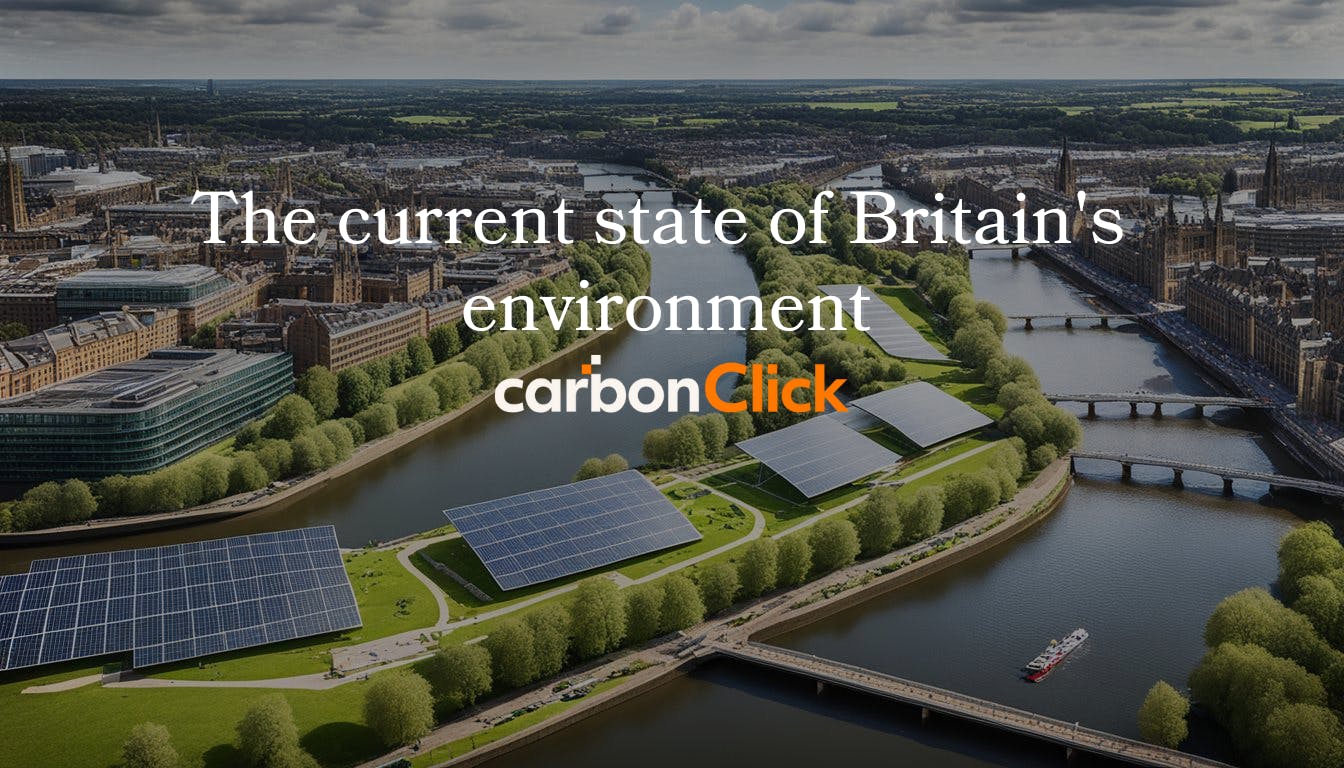
The current state of Britain's environment
Addressing this issue could bring health and economic benefits. The UK government aims to protect 30% of land and seas by 2030. They plan to create an additional 25 National Nature Reserves by 2027 and are advocating for more agri-environment schemes to aid in nature’s recovery.
Fixing this could bring health and economic benefits. The UK government aims to protect 30% of land and seas by 2030. They plan to create an additional 25 National Nature Reserves by 2027. They are also promoting more agri-environment schemes to support nature’s recovery.
Key Takeaways:
- 2023 was recorded as the second warmest year in the UK, reflecting the impacts of climate change.
- Air and water pollution play significant roles in deteriorating the UK's environmental health.
- The COVID-19 pandemic highlighted disparities in access to natural spaces.
- The UK government has set a target to protect 30% of land and seas for nature by 2030.
- Plans to establish 25 new National Nature Reserves by 2027 are underway.
- Natural England is working with farmers to implement agri-environment schemes for recovery.
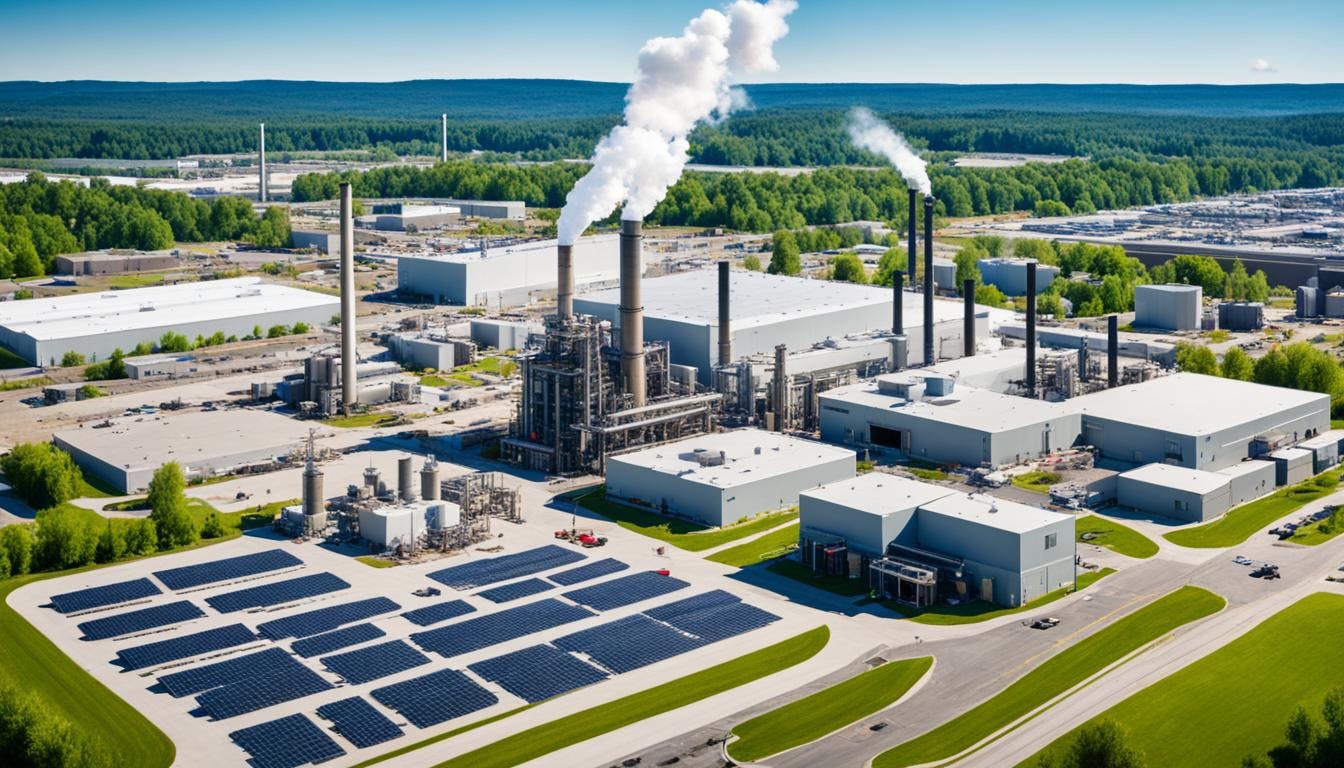
Air pollution and health impacts
Air pollution is a major threat to health in the UK, even at lower levels than before. It’s crucial to understand the current air pollution levels and their health effects. We must also explore how to address this serious issue.
Current Levels of Air Pollution in Britain
Air pollutants such as fine particulate matter (PM2.5), ammonia (NH3), nitrogen dioxide (NO2), and non-methane volatile organic compounds (NMVOCs) can vary significantly. In 2021, 10 out of 43 areas in the UK exceeded acceptable levels of NO2. Cities like Greater Manchester and Greater London reported levels more than five times the WHO’s recommended limits.
Health Consequences of Air Pollution
Air pollution has severe health impacts. Prolonged exposure can lead to heart and lung diseases, lung cancer, and reduced life expectancy. It is estimated to contribute to between 28,000 and 36,000 deaths annually in the UK.
Short-term increases in pollution can exacerbate asthma, impair lung function, and lead to more hospital admissions for respiratory and cardiovascular issues. Children, the elderly, and individuals with pre-existing health conditions are particularly vulnerable.
Measures Being Taken to Reduce Air Pollution
The UK Government and relevant agencies are actively working to improve air quality. The Environment Agency regulates pollution from waste and water. Over £800 million has been allocated to local authorities to promote cleaner transport.
New housing developments are incorporating natural spaces, demonstrating a commitment to both health and environmental improvement. The goal of achieving net-zero emissions by 2030 reflects the establishment of stringent environmental regulations aimed at addressing air pollution.
Climate change trends in the UK
In recent years, the UK has experienced significant changes in its climate. These shifts are attributed to global warming and weather events. Understanding these changes helps us prepare for the future.
Recent Temperature and Weather Trends
The UK has witnessed an increase in summer days in recent years. From 2013 to 2022, the number of summer days rose by 26% compared to earlier periods. In 2023, it was the second warmest year on record, reflecting the impact of global warming.
Additionally, six of the ten warmest years occurred in the last decade, underscoring the need for adaptation to climate change.
Higher sea temperatures are associated with these warmer temperatures, resulting in more frequent heatwaves in the UK. In 2022, heatwaves were linked to 3,271 deaths in England and Wales.
Impact of Climate Change on UK Landscapes
Climate change is visibly affecting the UK's landscapes. We are observing increased flooding and shifts in ecosystems. Record-breaking floods have damaged properties and resulted in loss of life.
Wildfires are also becoming more frequent, impacting local economies and wildlife. The risk of sea level rise is significant, with projections suggesting a potential increase of up to nine metres if temperatures rise by 4ºC. This could put two to three million people at risk of flooding.
Many new homes are being constructed in flood-risk areas, highlighting the need for adaptation to climate change and sustainable development.
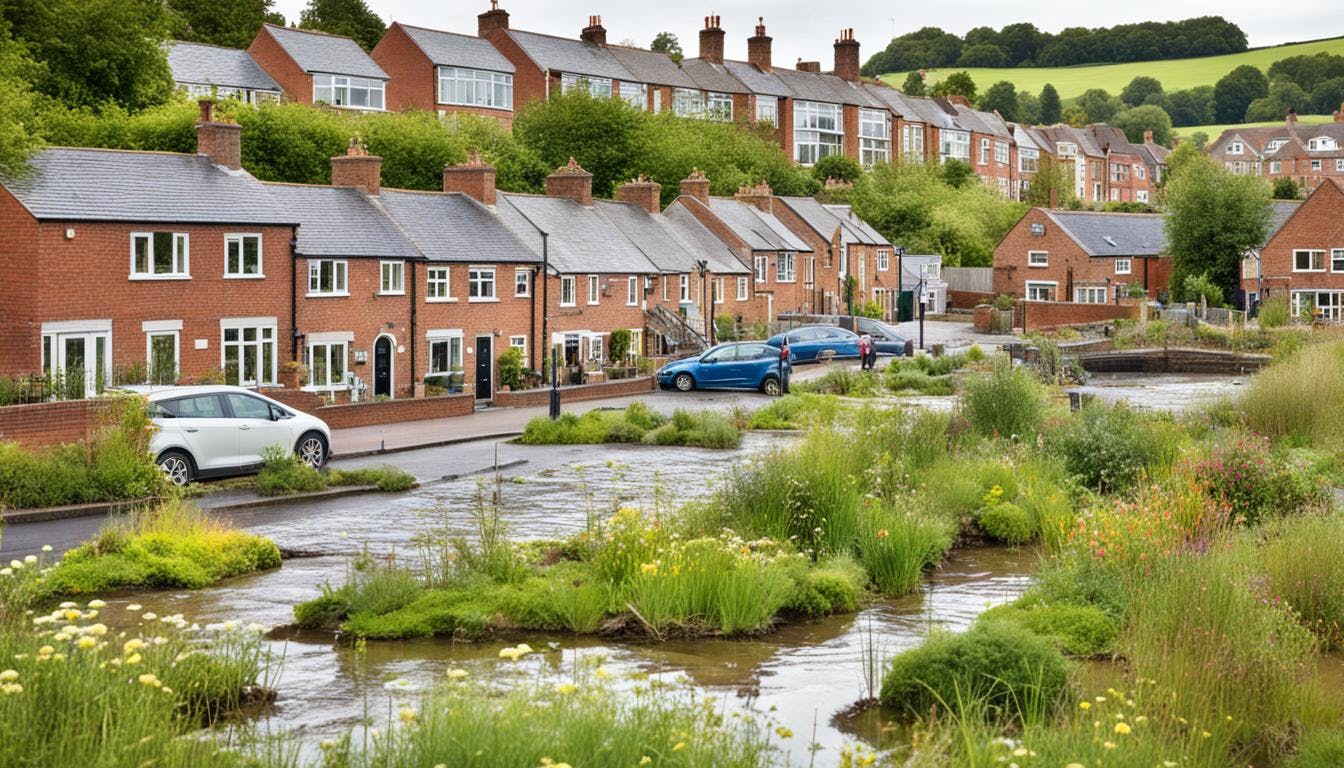

Flooding and health risks
Climate trends in the UK are leading to more extreme weather, such as heavy rain and flooding. These events pose immediate dangers and long-term health risks. Flood-related health issues often exacerbate anxiety and stress among those affected. Studies indicate that individuals impacted by extreme weather are 50% more likely to experience mental health problems.
The UK's flood risk underscores the need for infrastructure that can withstand such events. The Environment Agency emphasises the necessity for buildings and systems capable of effectively managing floods. This is crucial for ensuring the safety and health of communities.
Floods cost the UK approximately £1.3 billion annually. Events like Storm Desmond in 2015 and the winter floods of 2013/14 highlight the importance of robust infrastructure. After storms Dennis and Ciara in February 2020, over 82,000 people reported damage, with costs exceeding £360 million.
Floods also have profound effects on mental health. Long-term stress can diminish wellbeing, particularly in areas already facing socio-economic challenges. With increasing extreme weather events, addressing flood-related health issues and developing resilient infrastructure is more urgent than ever.
Access to natural and blue spaces
More people now recognise the significant health benefits of being close to nature. Studies indicate that proximity to natural spaces can reduce depression and improve overall health. Access to blue spaces, such as oceans, also contributes to wellbeing.
Health Benefits of Natural Spaces
A comprehensive review has identified a strong connection between exposure to nature and improved health in Britain. Areas with abundant natural spaces are associated with better health and increased happiness. Children in cities with more natural areas tend to be happier, particularly in diverse and economically disadvantaged areas.
Proximity to blue spaces, like oceans, has been shown to enhance children’s behaviour, as highlighted in the BlueHealth study. Nature exposure has been found to boost happiness. In the UK, mental health issues among adults incur significant costs each year, underscoring the importance of natural spaces for health.
Disparities in Access and Their Impacts
Access to natural spaces is not equally distributed, which is a significant issue. Areas with lower incomes and ethnic minority communities often have limited access to quality natural environments. This disparity can lead to increased health problems and reduced life expectancy.
Research suggests that individuals in poorer areas benefit more from natural spaces compared to those in wealthier areas. This emphasises the need to ensure equitable access to natural spaces to address health inequalities.
There is also a notable variation in accessibility to natural spaces in cities. Studies in England have linked mental health outcomes to the surrounding environment. It is crucial to ensure that everyone can enjoy the health benefits of nature, without inequities based on income or ethnicity.

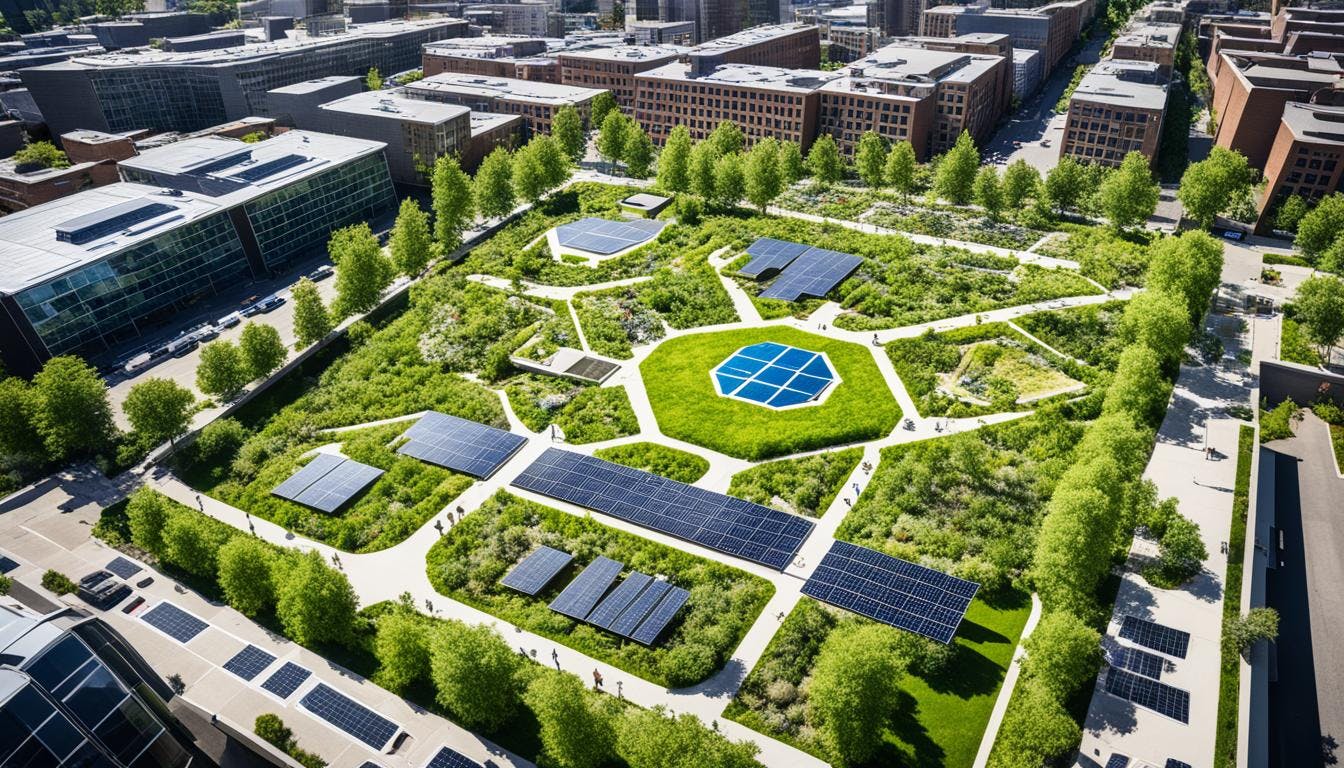
Public concerns about Climate change
Many Britons are concerned about climate change. About three in four adults (74%) in Great Britain feel worried. This level of concern has remained steady compared to last year. However, more people (9%) now report feeling unconcerned, and 17% are unsure.
Levels of Concern Across Different Demographics
Women (77%) are more worried about climate change than men (71%). Individuals with higher levels of education also show greater concern. Yet, many struggle to engage in environmental actions due to various reasons.
Lifestyle Changes People Are Making
Approximately 75% of people report that they have altered their behaviours to address climate change. This is a decrease from last year's 81%. They are reducing their use of single-use plastics, utilising sustainable energy sources, and consuming more plant-based foods. However, fewer people are currently taking action, suggesting that other issues may be hindering their efforts.
Barriers to Taking Action
Cost is a significant barrier to changing behaviours. The rising cost of living is leading people to prioritise other expenses over environmental actions. Many believe that major polluters should lead the way, feeling that their own efforts have limited impact. This belief that personal actions are insufficient is a major obstacle to change.
Despite these challenges, it is essential to continue raising awareness and engaging the public. This will support collective efforts towards a more sustainable future.
Environmental inequalities in Britain
In Britain, environmental inequalities are evident, particularly in poorer areas. These areas experience higher levels of pollution and have less access to natural spaces. This disparity has significant effects on health and wellbeing.
Areas Most Affected by Environmental Inequalities
Poor areas in Britain face substantial environmental challenges. There is a notable difference in pollution levels between affluent and less affluent areas. For instance, 46% of London’s poorest areas experience elevated levels of nitrogen dioxide, compared to just 2% in the wealthiest areas.
This results in increased health issues from pollution for those in poorer areas. Minority groups in these areas are disproportionately affected. They are three times more likely to be injured or die in road accidents compared to White people in wealthier areas.
Additionally, these areas have fewer natural spaces. Consequently, residents miss out on the health benefits associated with being in natural environments. Access to nature can enhance both physical and mental health.
Efforts to Address These Inequalities
Several initiatives are underway to address these environmental injustices. For example, Brighton & Hove City Council reduced roadside nitrogen dioxide levels by 25% and particulate matter by 3µg/m³ between 2014 and 2018 through various emission reduction measures.
In South Yorkshire, the ECO Stars Fleet Recognition Scheme proved effective, decreasing nitrogen dioxide emissions by 12% and particulate matter emissions by 41%.
Plans are also in place to increase access to natural spaces in less affluent areas, which is considered crucial for improving health. Ensuring everyone can benefit from natural environments supports environmental equity and could reduce healthcare costs.
Addressing these environmental inequalities requires a comprehensive approach. By tackling pollution and improving access to natural spaces for all, we can work towards a healthier and more equitable society.

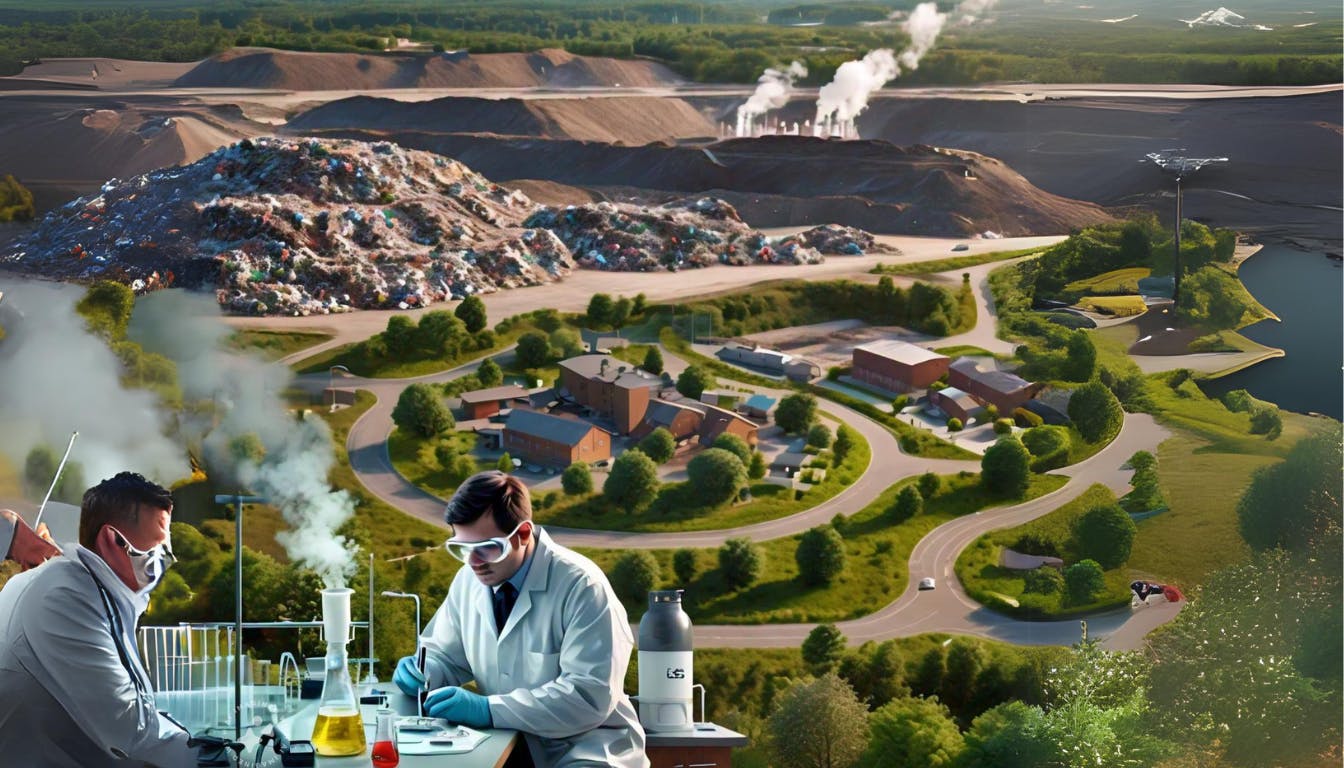
Human activity and pollution
Human actions are the main cause of pollution in our world. Things like industrial emissions and poor waste management make the environment worse.
In the UK, 27 million tonnes of household waste are sent to landfills each year. About 60% of this waste is biodegradable. However, practices such as recycling, reusing, and composting manage 42.2% of waste. Improved waste management is crucial for making a substantial difference.
Poor air quality is another significant issue, leading to approximately 29,000 deaths annually in the UK, which accounts for 10% of all deaths. This pollution is linked to serious health problems such as heart and lung diseases, stroke, diabetes, and dementia. Addressing pollution is essential to safeguard our health and the environment.
The long-term effects of exposure to pollutants are not fully understood. Further research is necessary to determine these effects. Efforts must focus on improving waste management and reducing industrial emissions to ensure a healthier future.
Urban development, biodiversity, human health, and climate resilience are interconnected. Strong environmental policies are needed to lessen our impact on nature. Achieving a harmony between development and nature conservation is crucial.
Government initiatives and public response
In recent years, the UK has made significant progress in addressing climate challenges. The government has introduced robust laws to reduce climate impact, promote renewable energy, and engage the public in environmental actions.
Current Government Policies
The UK has implemented key changes in climate legislation, starting with the Climate Change Act of 2008. This act aimed to reduce greenhouse gas emissions by 80% by 2050. In 2019, the target was updated to achieve net zero emissions by 2050.
The UK uses carbon budgets to manage emissions reductions over five-year periods. The first three budgets were met, and the fourth is currently underway. The UK ceased using coal for electricity generation by 2020, a significant reduction from 40% a decade ago.
The government plans to reduce emissions from public buildings by 50% by 2032 and by 75% by 2037. Scotland, Wales, and Northern Ireland also have targets for net zero emissions, contributing to the UK's overall goal by 2050.
Public Response and Engagement
Public reactions to these policies have been mixed. Many support efforts to reduce pollution and live sustainably, as evidenced by involvement in renewable energy and sustainable practices.
However, there are obstacles to broader public engagement. Financial constraints and lack of information are significant barriers. The government is working on education and incentives to encourage more people to participate in sustainable actions.
Success Stories and Areas for Improvement
There have been notable successes in addressing climate change. Wind power has increased, reducing emissions and enhancing energy independence. The cessation of coal use has also decreased the UK's carbon output.
Nevertheless, there is still progress to be made. Wealthy countries like the UK have high emissions per capita, necessitating stricter carbon reduction measures. The UK’s financial sector also supports polluting projects abroad, revealing a gap between policy and practice.
In conclusion, while the UK's efforts to address climate change are substantial, further improvements are needed. Enhancing UK climate legislation and increasing public participation in environmental initiatives are crucial for achieving a more sustainable future.

Conclusion
Britain's environment illustrates the significant challenges we face and the steps we can take towards a sustainable future. Carbon dioxide emissions are now 47% lower than in 1990, indicating progress. However, the Rosebank oil field exemplifies the complex trade-off between energy demands and reducing emissions.
As the climate warms, winter temperatures could increase by up to 4.5°C and summers by up to 6°C by 2070. This highlights the urgency of taking targeted action.
Government policies, such as the UK's 2008 legislation on carbon budgets, have positioned us as a leader in addressing climate change. However, delays in ending the sale of petrol and diesel vehicles and transitioning to electric heating raise concerns. Setbacks in offshore wind projects and the cancellation of the high-speed rail link further compound the difficulties. Finding an equilibrium between economic needs and environmental protection remains challenging.
A sustainable future requires collective effort. Industry leaders, governments, and citizens must collaborate to address these issues. Public support is strong, as demonstrated by the success of offshore wind farms and the £5.2 billion allocated for flood defences. We must achieve our targets for reducing CO2 emissions. By leveraging our strengths and addressing our weaknesses, we can ensure a sustainable recovery for the future.
FAQ's
What is the current state of Britain's environment?
Britain faces significant environmental challenges, including high levels of air pollution, disparities in access to natural spaces, and the effects of climate change. The COVID-19 pandemic exacerbated these issues, particularly affecting poorer areas and ethnic minority groups.
What measures are being taken to reduce air pollution?
The Environment Agency is addressing air pollution through various measures, including regulating industries, enhancing natural spaces, and striving for net-zero emissions by 2030. New developments are incorporating more natural spaces to help improve air quality.
What recent temperature and weather trends have been observed in the UK?
The UK has experienced warmer, wetter, and sunnier conditions recently. In 2023, it was the second warmest year on record. Six of the ten warmest years have occurred in the past decade.
How does climate change impact the UK's landscapes?
Climate change is causing more frequent floods, altering ecosystems, and increasing the occurrence of extreme weather. These changes affect landscapes and can negatively impact health, including mental health.
What are the trends in UK flooding and associated health risks?
The UK is seeing more frequent flooding and extreme weather events. These occurrences pose immediate dangers and can have long-term health effects, including impacts on mental health.
What are the health benefits of natural and blue spaces?
Access to natural spaces, such as parks and waterways, is beneficial for health. It reduces stress, enhances mental health, and encourages physical activity. These spaces can also lower healthcare costs.
What lifestyle changes are people making in response to climate change?
Some people are adopting more sustainable lifestyles, but widespread change is limited. Financial constraints and immediate needs often take precedence over environmental actions.
What areas are most affected by environmental inequalities in Britain?
Poorer areas and ethnic minority groups are most affected by environmental inequalities. They experience poorer air quality, less access to natural spaces, and greater environmental risks.
What efforts are being made to address environmental inequalities?
Efforts include creating and connecting healthy natural spaces to promote fairness and reduce health costs. These initiatives aim to improve equity and save on healthcare expenses.
What is the public response to government environmental initiatives?
Public responses to government environmental policies are mixed. While some measures are well-received, others need more attention. There is a call for increased public engagement to enhance effectiveness.
17 South Street
Auckland 1010
New Zealand
info@carbonclick.com- -
- X
Subscribe now to stay up to date with CarbonClick, carbon offsetting and climate action.
By signing up you agree to our Privacy Policy.


